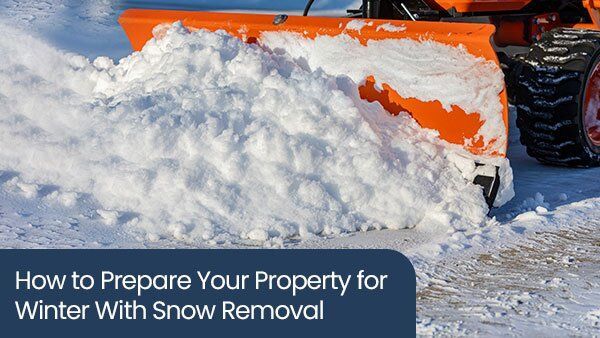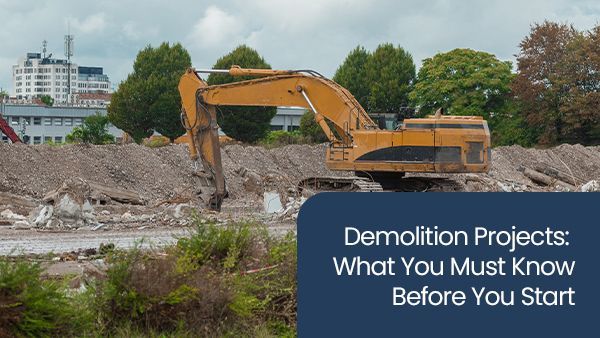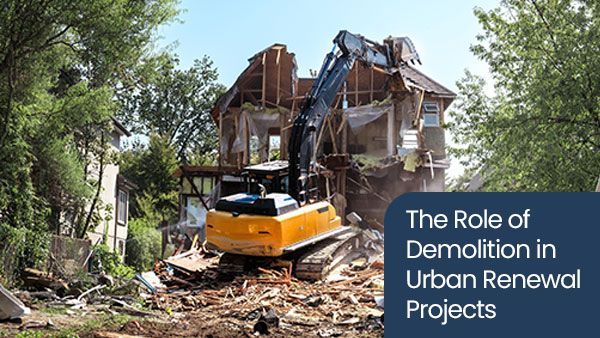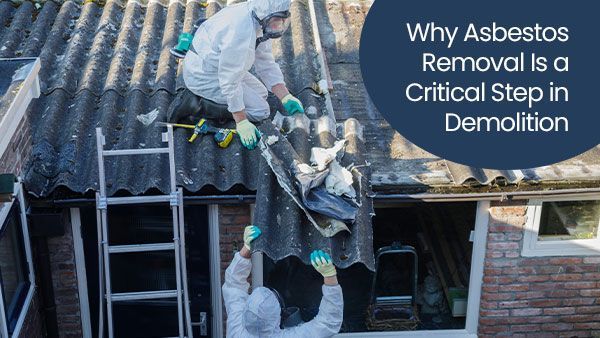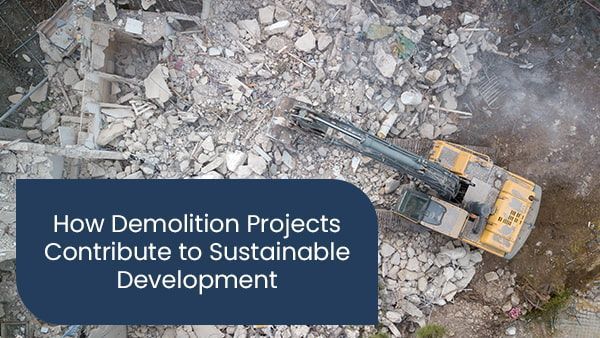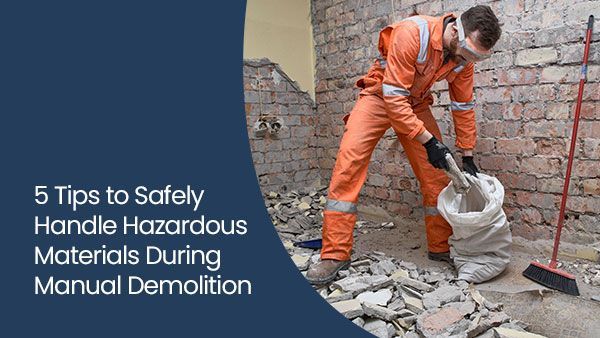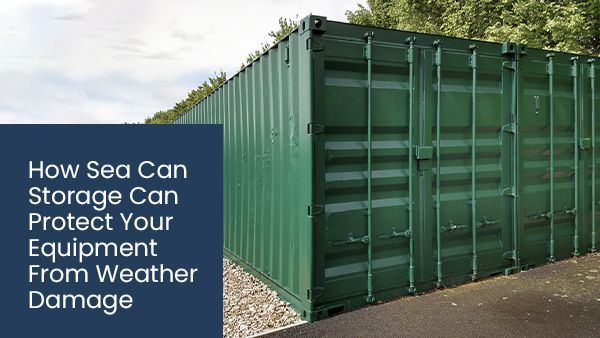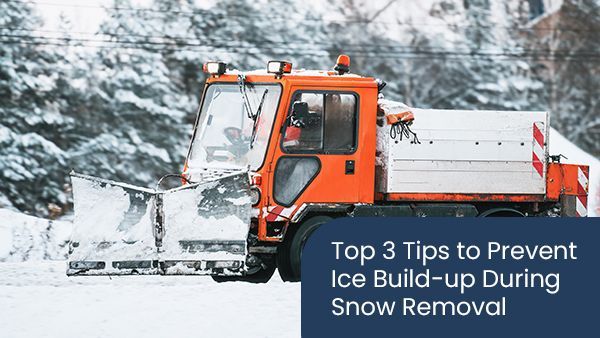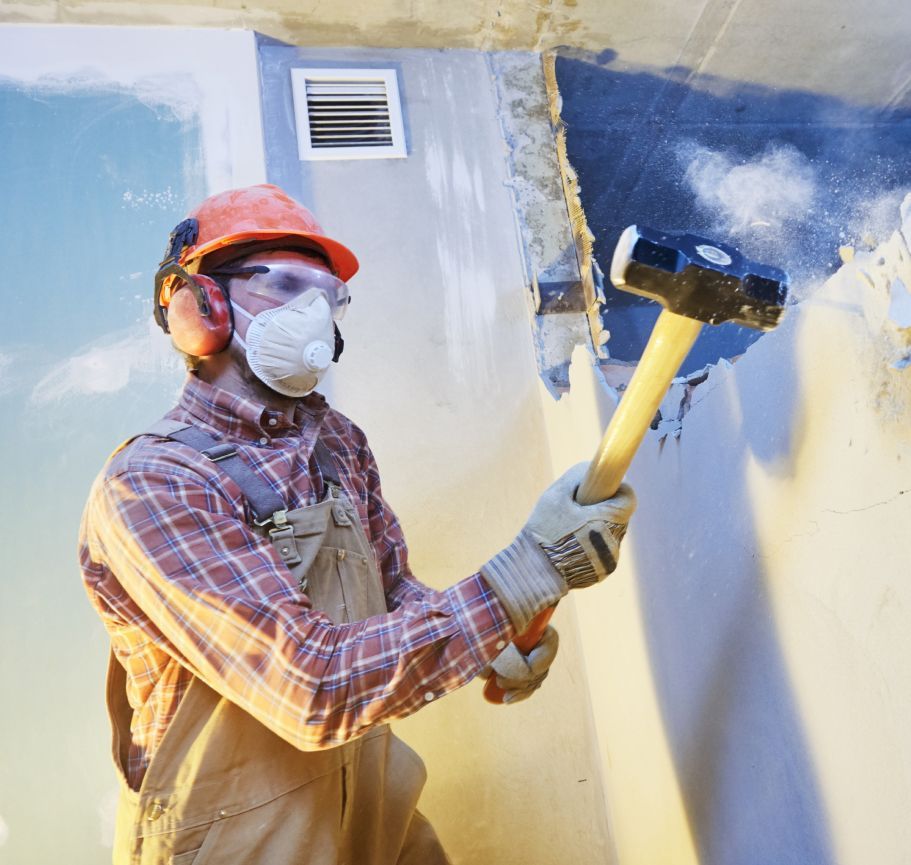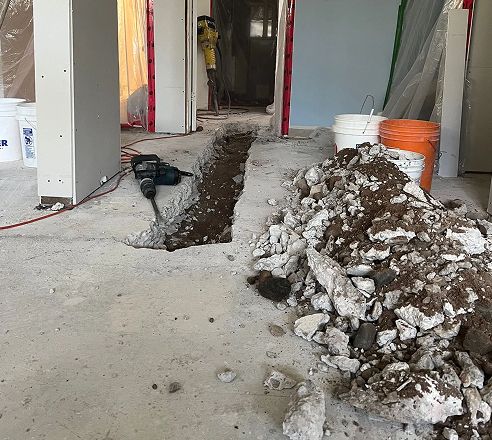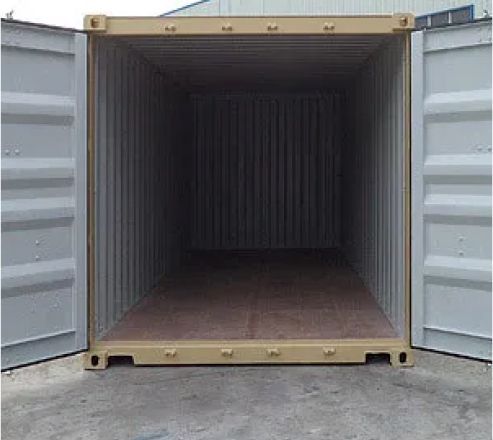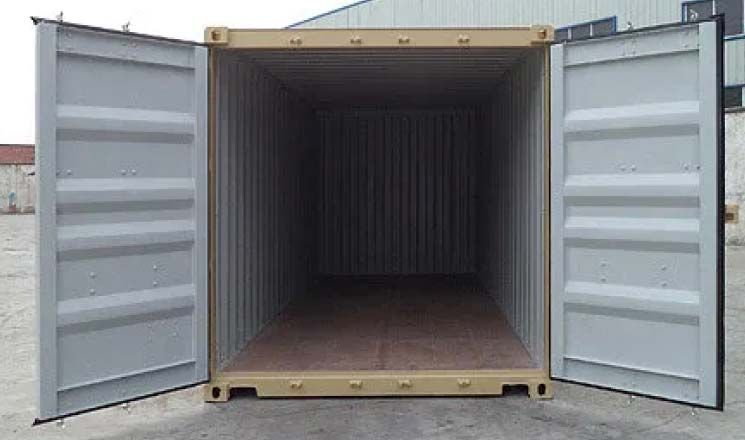Safety Protocols: A Demolition Company’s Responsibility
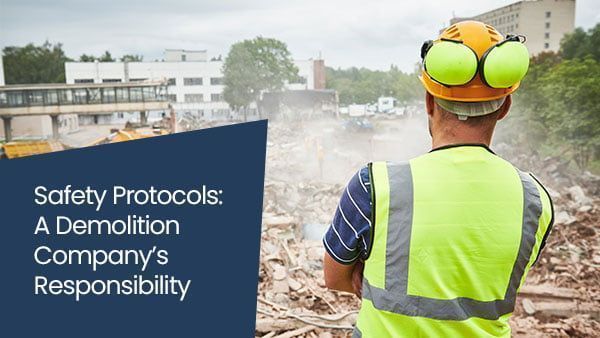
Demolition work may appear chaotic externally, but the truth is that there is just no room for messiness when it comes to safety. Whether a demolition project involves demolishing a small building or evacuating an entire building, there is often a necessity for the use of heavy machinery. There is usually structural danger involved, and exposure to toxic materials is possible.
Even a single error can cause severe injury or long-term damage, not just to the crew, but also to neighbouring properties and the public in general. It is for this reason that safety measures must always be at the forefront of the entire demolition process.
Demolition jobs are often more complex than they appear, and many of the most significant hazards aren't immediately apparent. Old buildings can contain asbestos or mould behind their walls, and hidden gas lines, faulty wiring, or structurally compromised supports can be very hazardous if not appropriately addressed.
Proper site inspections and open communication are thus essential before equipment starts rolling. A safe site is an effective site because if everybody is aware of the hazard and their role in managing it, the job can be done faster and without costly holdups.
What are some of the ways that a demolition company must maintain safety at all times?
Since various safety hazards are typical on demolition sites, it is essential to work with a demolition company that prioritizes safety and implements proper measures to mitigate these risks.
To minimize the risk of workers experiencing job-related injuries and prevent damage to surrounding property, it is essential to implement several safety measures to maintain a consistent level of safety.
Let’s get into some of the different measures that a demolition company must always take to keep the demolition site safe at all times.
1. Performing a Thorough Site Assessment
Before starting any demolition project, a thorough site assessment takes place as part of the demolition planning process. During this site assessment, it is essential to identify any potential hazards that could arise during the demolition process, including unstable structures, underground utilities, nearby buildings, or contaminated soil.
To gain a comprehensive understanding of potential risks during this thorough investigation, it is often necessary to collaborate with professional surveyors, environmental consultants, and geotechnical engineers who possess the expertise to identify less obvious risks and offer valuable suggestions.
2. Putting Together a Safety Plan
To ensure a successful demolition while maintaining worker safety, the next stage in the demolition planning process involves developing a comprehensive safety management plan.
Utilizing key information gathered from the site assessment, it is necessary to conduct a risk analysis that identifies all potential dangers and provides proactive measures for preventing incidents before they occur.
The plan must also include clear emergency response procedures for addressing various incidents, such as equipment failure, injuries, or environmental hazards. Part of this involves creating a set communication strategy that workers can use to report concerns and receive critical updates.
By addressing these key safety components, the safety plan helps ensure construction readiness and serves as a proactive tool for preventing accidents.
3. Engaging in Proper Training
Yet another critical component of maintaining a safe demolition site is equipping all personnel with appropriate training to ensure they understand their job-specific responsibilities, mainly if they must operate heavy machinery or work in high-risk environments.
These workers’ training should cover core safety practices, proper use of personal protective equipment (PPE), and techniques for identifying and responding to potential hazards before they lead to incidents.
In addition to receiving general safety instructions, it is essential for workers tasked with operating cranes and excavators to hold up-to-date certifications and licenses that meet local and federal regulatory requirements. These qualifications ensure that only competent and authorized individuals perform high-risk tasks, thereby reducing liability and enhancing site safety.
4. Following Proper Site Preparation Protocols
Before any demolition work can begin, following proper site preparation protocols is essential to secure the site and protect both the public and the workers.
To prevent unauthorized access to demolition zones, which can pose serious safety risks, companies must establish a controlled and secure perimeter using durable fencing, warning signs, and access control systems.
Restricting site entry ensures that only authorized personnel are present, allowing crew members to focus on their work without distraction or concern about uninvited individuals wandering into hazardous areas.
In addition to physical security, environmental considerations must also be taken into account during this site preparation process. Since dust produced during demolition projects can pose significant health risks, contractors should implement dust suppression strategies, such as mist cannons, water spraying, or foam applications.
Informing neighbouring residents and businesses of project timelines, expected disruptions, and the safety measures in place is also a good idea to foster a cooperative relationship with the surrounding community.
5. Managing Hazardous Materials
Demolition projects often involve structures that contain hazardous substances, such as asbestos, lead-based paints, polychlorinated biphenyls (PCBs), and industrial chemicals. These materials can pose serious health risks to workers and nearby communities if not properly managed.
If a certified inspector assesses the site and determines that hazardous materials are present, strict procedures must be followed for the safe containment, removal, and disposal of these materials. It includes sealing off affected areas, using PPE, and employing industry-approved decontamination techniques.
It is crucial to involve licensed abatement contractors in this process, as they possess the necessary knowledge and equipment to handle toxic substances in compliance with federal, provincial, and municipal regulations.
Not only can failing to manage hazardous materials responsibly lead to significant health risks, but it can also result in serious legal and financial consequences.
How MOD Demolition Helps Ensure Safety Through Proper Site Preparation Protocols and Demolition Planning Procedures
It is impossible to tear down a building without encountering various safety hazards and risks, which is why it is crucial to collaborate with experienced professionals on a project like this. Our skilled demolition experts at MOD Demolition understand how to properly handle site preparation , demolition planning procedures, and safety protocols.
We prioritize maintaining safe practices from start to finish on all our demolition projects, whether large or small. We have expertise in both manual demolition and deconstruction strategies, as well as machine demolition tactics. Our professional and efficient demolition services cater to both residential and commercial properties.
We have a deep understanding of how to approach the removal, handling, and disposal of hazardous materials, such as asbestos. If such materials are found on your property, we can ensure they are dealt with in a safe and compliant manner.
Thanks to our advanced equipment and knowledgeable demolition team, we consistently complete demolition jobs on time, keeping your future construction or development plans on track.
Thanks to our precision and attention to detail, we also always ensure minimal disruption to surrounding areas and conduct a thorough and proper cleanup afterwards.
For more information about our approach to site preparation before demolition or to learn more about the steps we take to maintain a safe work site at all times, call MOD Demolition at 249-449-0018 or contact us here.






